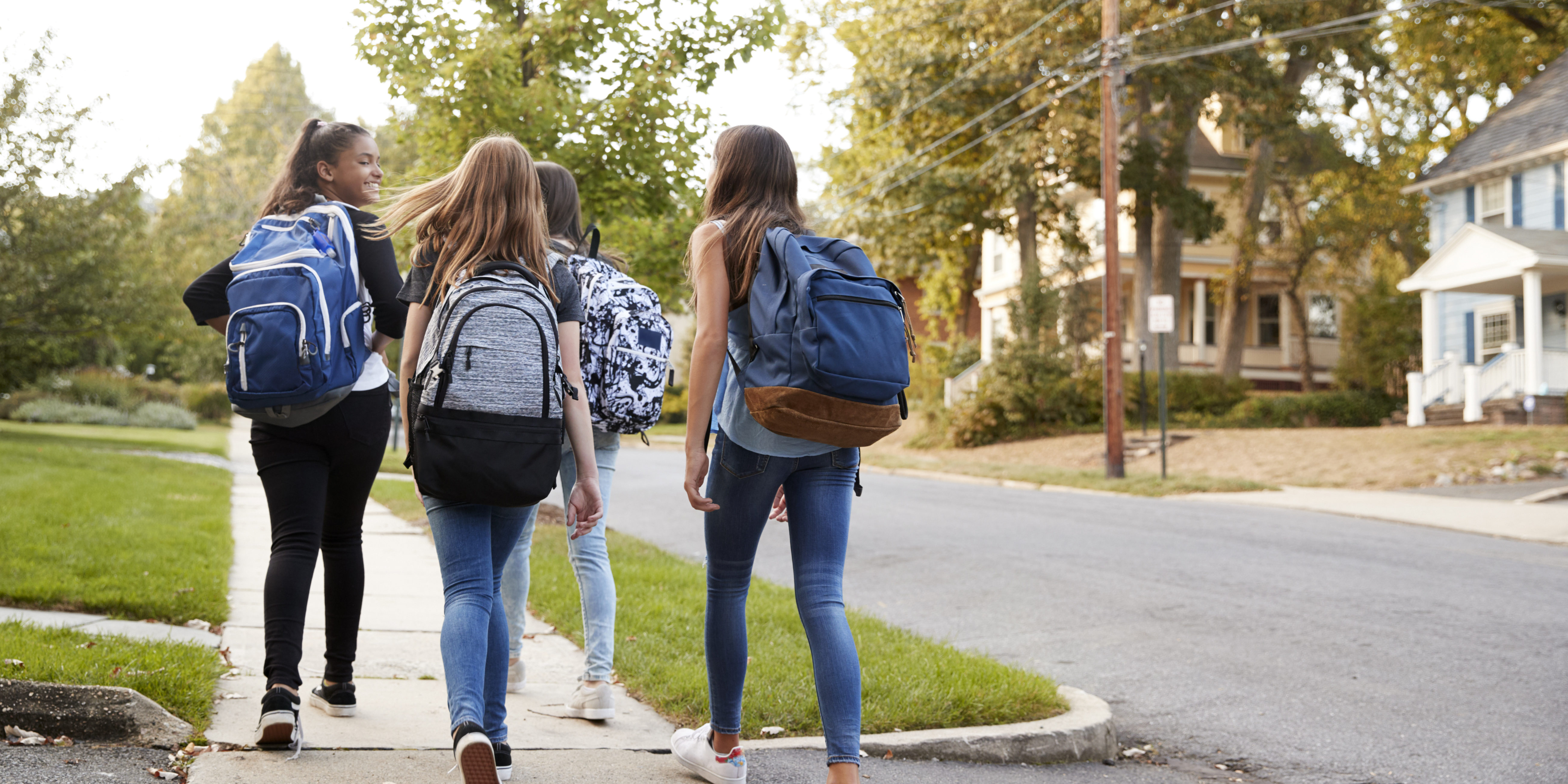Traffic Calming in School Zones
Walking to school used to be a rite of passage for kids. It was part of everyday life; part and parcel of growing up. In the past few decades, that has changed. A combination of fear mongering about traffic and crime as well as families living further from schools has resulted in less and less children walking or biking to school.
past few decades, that has changed. A combination of fear mongering about traffic and crime as well as families living further from schools has resulted in less and less children walking or biking to school.
In 1969, 48% of kids walked or biked to school. Of those living within a mile of school, almost everyone (89%) did. Today, only 11% of children walk or bike to school.
Why Walking to School Matters
Walking to school offers myriad benefits, many of them unexpected. It has been shown to affect kids’ behavior and health, educational outcomes, and even adequate sleep. Kids who exert more energy before they learn are more likely to be able to sit through their lessons, less likely to be obese, and perform better academically. And perhaps most notably, kids who walk to school tend to continue walking as they age. Studies find that students who walk to school generally continue to walk two and four years down the line. Even more significantly, walking to school can have a lifelong impact, encouraging an active lifestyle during the formative years.
Safe Roads for Kids to Walk On

But another fundamental step that cities and towns need to take is ensuring kids can get there safely. Parents need to know that their children are safe and protected on roads in and around schools. Slowing cars down along routes that are popularly used by neighborhood children is key to encouraging kids to start walking to school. This can be done with a combination of speed display signs, speed cameras, variable message signs, or speed humps. Choosing solutions based on posted speed limits and demonstrated driver behavior is the best way to yield safer roads that parents can confidently let their children walk on.
Win-Win for Municipalities and Families
Towns, cities, and school districts that work to create safer ways to walk to school ultimately also benefit themselves. Their 
Communities across the country have implemented Safe Routes to School programs. These encourage pedestrian safety while promoting walking and bicycling to schools. Even without a formal program, small changes can make a big difference. The goal is to get more kids out of cars and buses and back on their feet.
Find out how Traffic Logix can help guide you. We’re here to help you find the right solutions to encourage more walking to school, and safer routes to walk on.






